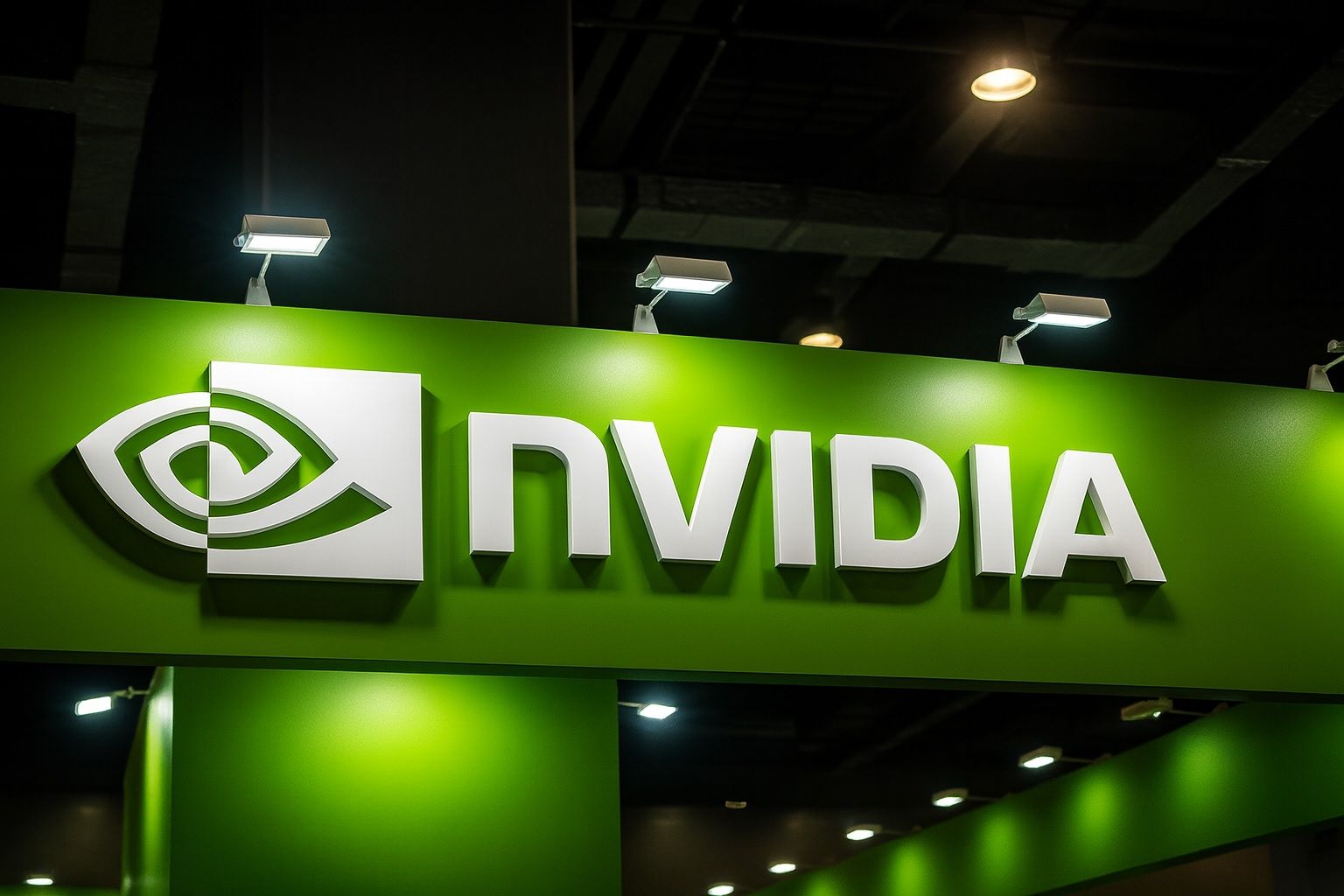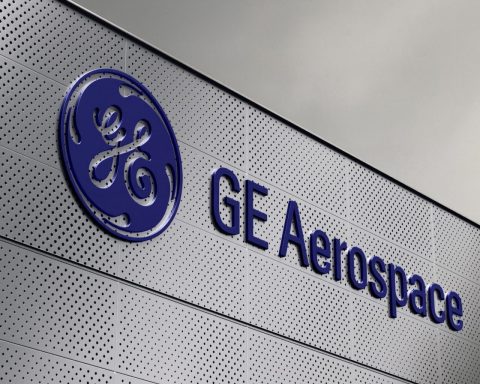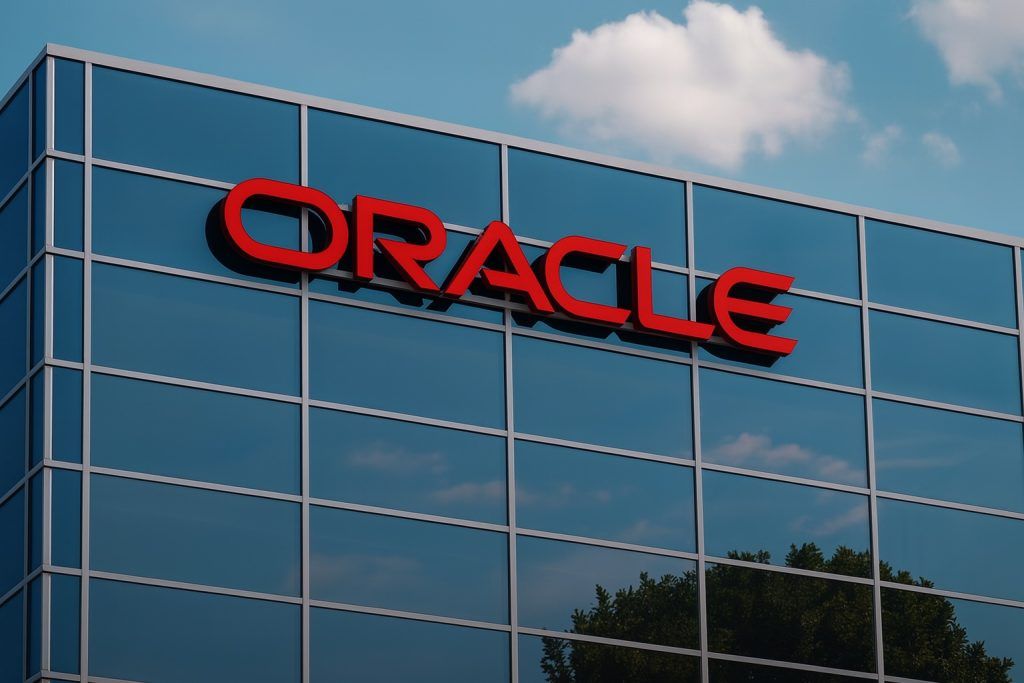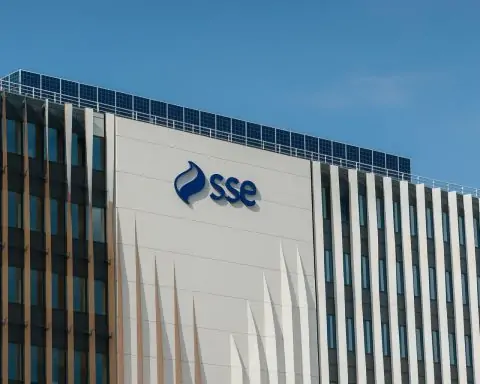Published: November 19, 2025
Nvidia stock took center stage on Wall Street today as the AI chip giant delivered another blockbuster earnings report and signaled that demand for its GPUs is still accelerating, not cooling. After a volatile few weeks marked by talk of an “AI bubble,” Nvidia’s results for its fiscal third quarter of 2026 and its strong outlook helped push NVDA higher in both regular and after-hours trading, while calming broader market jitters. [1]
Nvidia stock price today: how NVDA traded on November 19, 2025
During Wednesday’s regular session, Nvidia (NASDAQ: NVDA) gained just under 3%, closing at $186.52. The stock opened at about $184.79, traded as high as roughly $187.86 and as low as $182.83, on volume of just over 200 million shares — slightly above its already elevated recent average. [2]
That move reversed part of the pullback Nvidia had suffered earlier in November, when worries over AI spending and stretched valuations drove the stock down more than 7% over the previous week. [3]
The real fireworks, however, came after the closing bell:
- After-hours trading: Multiple outlets reported that NVDA jumped about 4–5% after hours, with shares trading above $193 following the earnings release and guidance. [4]
This combination of a solid regular-session gain and a sharp after-hours pop reflects investors’ relief that Nvidia not only met but decisively beat sky‑high expectations.
Q3 FY2026 earnings: record revenue and profits
Nvidia’s fiscal Q3 2026 (quarter ended October 26, 2025) was one of the most closely watched earnings events of the year — and the company did not disappoint.
According to Nvidia’s official release, the company reported: [5]
- Revenue:$57.0 billion,
- Up 22% quarter‑over‑quarter
- Up 62% year‑over‑year
- GAAP & non‑GAAP EPS:$1.30 per diluted share,
- Up about 20–24% versus Q2
- Up roughly 60–67% versus a year ago
- GAAP gross margin: 73.4% (73.6% non‑GAAP)
Wall Street had been expecting revenue around $54.8–55.4 billion and EPS near $1.25–1.26, according to consensus estimates compiled by Visible Alpha and other data providers. Nvidia therefore beat estimates on both the top and bottom line. [6]
Net income reached roughly $31.9 billion, up around 65% year‑over‑year — another record for the company. [7]
Data Center business: AI demand still “off the charts”
The key driver of Nvidia’s results remains its AI‑focused Data Center segment, which supplies GPUs and systems used in training and running large AI models in cloud and enterprise environments.
In Q3 FY2026, Nvidia’s Data Center revenue hit a new record: [8]
- $51.2 billion in Data Center sales
- +25% vs last quarter
- +66% vs the same quarter a year ago
This means nearly nine out of every ten dollars Nvidia earned this quarter came from Data Center products tied to AI infrastructure.
CEO Jensen Huang struck a characteristically bullish tone, saying that Blackwell‑architecture GPU sales are “off the charts” and cloud GPUs are effectively sold out, with demand for AI compute still accelerating. [9]
Key strategic points from the quarter include: [10]
- Nvidia continues to dominate the AI accelerator market, with estimates often putting its share at 85–90% of the high‑end AI chip space.
- The company highlighted major partnerships and deployments with OpenAI, Google Cloud, Microsoft, Oracle, xAI, Anthropic and others, including multi‑gigawatt AI infrastructure build‑outs.
- Management said roughly 5 million GPUs were sold in aggregate across customers, underscoring the scale of AI infrastructure expansion.
This Data Center momentum is central to the bullish case for Nvidia stock — and to broader questions about whether today’s AI spending is sustainable.
Other segments: gaming softer, but still growing year‑over‑year
While AI infrastructure dominates the headlines, Nvidia’s legacy businesses also contributed:
- Gaming & AI PC: Revenue of about $4.3 billion,
- Down ~1% sequentially
- Up ~30% year‑over‑year, helped by RTX‑powered titles and AI‑PC momentum. [11]
- Professional Visualization: Around $760 million, up 26% quarter‑over‑quarter and 56% year‑over‑year. [12]
- Automotive & Robotics: Roughly $592 million, modest sequential growth but strong 32% annual growth as Nvidia expands into autonomous driving and industrial “physical AI” platforms. [13]
These segments are now relatively small compared with Data Center, but they broaden Nvidia’s growth story and help support the long‑term narrative of GPUs powering everything from games and PCs to cars, robots and telecom networks.
Guidance: Q4 outlook pushes AI bubble fears into the background
Perhaps the most market‑moving part of today’s announcement was Nvidia’s guidance for the current quarter.
For Q4 FY2026, Nvidia expects: [14]
- Revenue: About $65.0 billion, plus or minus 2%
- GAAP gross margin: ~74.8%
- Non‑GAAP gross margin: ~75.0%
Street estimates had been closer to $61.8 billion in revenue, so Nvidia’s forecast significantly outpaced consensus. [15]
This stronger‑than‑expected guidance is a big reason NVDA spiked in after‑hours trading and why many commentators say the report helped “quiet AI bubble talk” — at least for now. [16]
What today’s numbers say about Nvidia’s AI dominance
Across today’s coverage, several themes stand out:
- AI demand is still ramping, not rolling over.
Revenue growth north of 60% year‑over‑year, driven overwhelmingly by Data Center GPUs, suggests that hyperscalers, sovereign AI projects and leading AI labs are still aggressively building out infrastructure. [17] - Nvidia remains the “hub” of the AI ecosystem.
From multi‑gigawatt deals with OpenAI and Anthropic to massive build‑outs at Microsoft, Google, Oracle and others, Nvidia’s GPUs remain the default choice for high‑end AI workloads. [18] - AI bubble worries haven’t vanished — but they’ve eased.
In the lead‑up to earnings, some investors grew nervous as Nvidia shares slid and commentators highlighted “circular” financing arrangements (chips in exchange for big AI investment commitments) and rising sector valuations. [19]
Today’s beat‑and‑raise report and the stock’s positive reaction weakened the immediate bear case, but skepticism about how long spending can stay this elevated still lingers. - Macro impact is huge.
Nvidia now accounts for around 7–8% of the S&P 500 by market cap, making its quarterly results a de‑facto referendum on the entire AI trade and a key driver of index performance, 401(k)s and tech sentiment. [20]
Market reaction: from “AI exhaustion” fears to relief rally
Heading into today, options markets were pricing in a one‑day swing of roughly 6–7.7% in Nvidia stock following earnings — an unusually large move even by NVDA’s volatile standards. [21]
At the same time, a broader tech and AI sell‑off had pushed Nvidia down double‑digits from its late‑October highs, amplifying nervousness that any disappointment could spark a deeper correction. [22]
Instead, Wall Street got:
- A regular‑session gain of ~2.8–2.9% as investors positioned ahead of the news
- A further 4–5% surge after hours once the numbers and guidance hit the tape [23]
Major indices, which had been under pressure in recent days, also snapped losing streaks and moved higher as traders welcomed Nvidia’s results and digested Federal Reserve meeting minutes. [24]
The result: instead of confirming fears of a fast‑deflating AI boom, Nvidia’s Q3 report provided a “validation moment”for bulls arguing that AI infrastructure spending still has years of runway. [25]
New Nvidia headlines today beyond earnings
Beyond the earnings release itself, several other Nvidia‑related stories broke on November 19, 2025, adding important context for NVDA shareholders.
1. Menlo Micro collaboration speeds up AI chip testing
Reuters reported that Nvidia and startup Menlo Micro have jointly developed switching chips that can speed up AI GPU testing by 30% to 90%, addressing a key production bottleneck in getting high‑power GPUs validated and shipped. [26]
Because every Nvidia AI chip must be tested on specialized boards before reaching customers, any improvement in testing throughput directly supports the company’s ability to scale production to meet surging demand. This collaboration underscores how Nvidia is fine‑tuning its supply chain — not just its chip designs — to keep pace with the AI boom.
2. U.S. approves Nvidia chip exports for Armenian AI supercomputer
Separately, a report cited by Bloomberg and summarized by OC Media said the U.S. government has approved exports of advanced Nvidia processors to AI startup Firebird for a $500 million AI supercomputing facility in Armenia. [27]
Key points from that report:
- The project will use Nvidia’s next‑generation Blackwell chips and Dell servers.
- It’s billed as the first large‑scale AI data center in the South Caucasus.
- About 20% of computing power will be reserved for domestic Armenian firms, with the rest sold to U.S. companies operating in the region.
Beyond incremental revenue, this news highlights how U.S. export policy around high‑end AI chips is evolving. Armenia had previously been in a more restricted category under earlier rules; this approval indicates a broader willingness to allow Nvidia’s AI hardware into some emerging markets under defined conditions. [28]
Capital returns and balance sheet: massive buybacks continue
Nvidia continues to deploy its cash pile aggressively:
- The company returned $37.0 billion to shareholders via buybacks and dividends in the first nine months of fiscal 2026.
- It still has roughly $62.2 billion remaining under its share repurchase authorization.
- Nvidia declared a quarterly cash dividend of $0.01 per share, payable December 26, 2025 to shareholders of record on December 4, 2025. [29]
While the nominal dividend is small, the combination of huge free cash flow and an enormous remaining buyback firepower provides a powerful buffer if the stock dips — and adds another pillar to the long‑term bull case.
Valuation and analyst sentiment after today’s move
Even after its pullback earlier this month, Nvidia entered today’s report trading at about 29x forward earnings, below its 10‑year average multiple of roughly 35 but still at a premium to the Nasdaq 100’s forward P/E near 26. [30]
Analyst sentiment remains overwhelmingly positive:
- One recent tally shows 40 of 47 analysts rating Nvidia a “Strong Buy,” with only a small minority on the sidelines. [31]
- Consensus 12‑month price targets cluster around $219–$222, implying roughly 17–19% upside from the pre‑earnings price region. [32]
However, several strategists warned today that investors “don’t have to own Nvidia” at any price, arguing that concentration risk in mega‑cap AI names is rising and that any slowdown in AI spending could trigger a sharp repricing. [33]
Risks still on the radar
Despite today’s impressive numbers, Nvidia’s Q3 report and recent commentary highlight several ongoing risks for NVDA shareholders:
- Rising operating expenses and inventories:
Operating expenses rose more than 36–38% year‑over‑year, while inventories have climbed sharply (to nearly $20 billion by some estimates), raising questions about how easily Nvidia can adjust if demand cools. [34] - Gross margin compression:
GAAP gross margin dipped by about 1.2 percentage points from a year ago as costs climbed and product mix shifted, though margins remain exceptionally high in the mid‑70s. [35] - AI bubble and “circular” financing concerns:
Some critics worry about deals where AI companies commit to large GPU purchases in exchange for equity investments, as well as heavy leverage and government‑backstop suggestions from AI labs. These dynamics fuel the debate over whether AI is in a speculative bubble. [36] - Regulatory and export risk:
Nvidia’s AI chips are subject to complex export controls; prior restrictions on high‑end chip shipments to China and some other markets have already forced it to redesign certain products. New approvals, like the Armenia project, show rules can ease in some areas — but they can just as easily tighten elsewhere. [37] - Market‑wide sensitivity to Nvidia:
Because Nvidia is now such a large part of major indices and AI‑themed ETFs, any sharp sell‑off in NVDA can drag down a wide swath of tech and growth stocks, amplifying volatility. [38]
What today could mean for Nvidia stock going forward
History shows that Nvidia stock doesn’t always soar the day after an earnings beat; guidance and macro sentiment often matter as much as the headline numbers. Studies of past reports suggest that post‑earnings moves can be sharp but inconsistent, with some big beats followed by “sell‑the‑news” pullbacks. [39]
That said, today’s combination of:
- Strong beat on revenue and EPS
- Even stronger guidance
- Evidence of sustained, broad‑based AI demand
- A positive immediate market reaction
…will likely reinforce the view that Nvidia remains the core pure‑play on AI infrastructure — and that the AI cycle, for now, is still in a powerful expansion phase, not in its final innings. [40]
Quick FAQ: Nvidia stock on November 19, 2025
What is Nvidia’s stock price today, November 19, 2025?
Nvidia (NVDA) closed the regular U.S. session at $186.52, up about 2.85% on the day, with an intraday range of roughly $182.83–$187.86. After hours, shares traded above $193, about 4–5% higher than the close, following the Q3 FY2026 earnings release. [41]
Did Nvidia beat earnings expectations?
Yes. Nvidia reported $57.0 billion in revenue and $1.30 in EPS, beating consensus estimates of roughly $54.8–55.4 billion in revenue and $1.25–1.26 in EPS. [42]
Why is Nvidia stock up today?
Investors are responding to a strong beat on Q3 results, record Data Center revenue, and higher‑than‑expected Q4 guidance that suggests AI chip demand remains extremely robust. Relief that the AI boom hasn’t stalled — plus Nvidia’s continued dominance in AI infrastructure — has pushed the stock higher. [43]
Is Nvidia stock a buy after these earnings?
That depends on your risk tolerance, time horizon and portfolio. Analysts remain broadly bullish, with most rating Nvidia a “Buy” or “Strong Buy” and price targets implying double‑digit upside. However, the stock still trades at a premium valuation and is highly sensitive to shifts in AI spending, regulation and macro conditions. Investors should view this article as information, not investment advice, and should do their own research or consult a licensed financial adviser before making trading decisions. [44]
Disclaimer: All figures and market data are as of November 19, 2025, and may change as markets continue to trade and new information emerges. Nothing in this article is personalized investment, tax, or legal advice.
References
1. abc17news.com, 2. stockanalysis.com, 3. www.reuters.com, 4. www.fxstreet.com, 5. www.globenewswire.com, 6. globelynews.com, 7. www.globenewswire.com, 8. www.globenewswire.com, 9. www.globenewswire.com, 10. www.globenewswire.com, 11. www.globenewswire.com, 12. www.globenewswire.com, 13. www.globenewswire.com, 14. www.globenewswire.com, 15. www.fxstreet.com, 16. techcrunch.com, 17. www.globenewswire.com, 18. www.globenewswire.com, 19. abc17news.com, 20. abc17news.com, 21. www.nasdaq.com, 22. www.reuters.com, 23. www.marketbeat.com, 24. www.reuters.com, 25. www.investors.com, 26. www.reuters.com, 27. oc-media.org, 28. oc-media.org, 29. www.globenewswire.com, 30. m.economictimes.com, 31. m.economictimes.com, 32. m.economictimes.com, 33. invezz.com, 34. www.stocktitan.net, 35. www.globenewswire.com, 36. abc17news.com, 37. oc-media.org, 38. www.reuters.com, 39. www.nasdaq.com, 40. www.globenewswire.com, 41. stockanalysis.com, 42. www.globenewswire.com, 43. www.globenewswire.com, 44. m.economictimes.com








